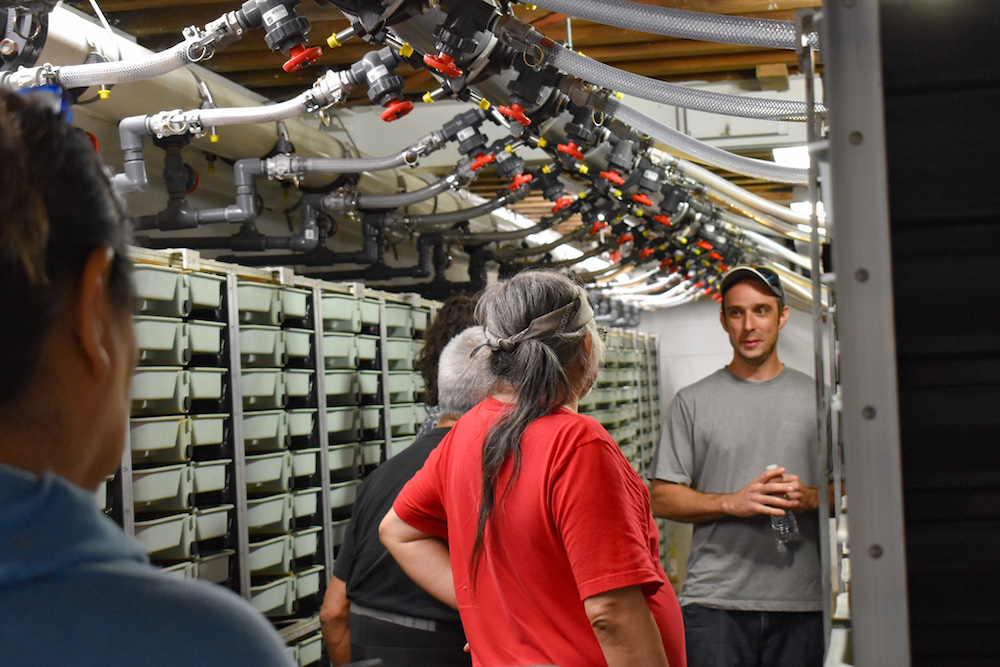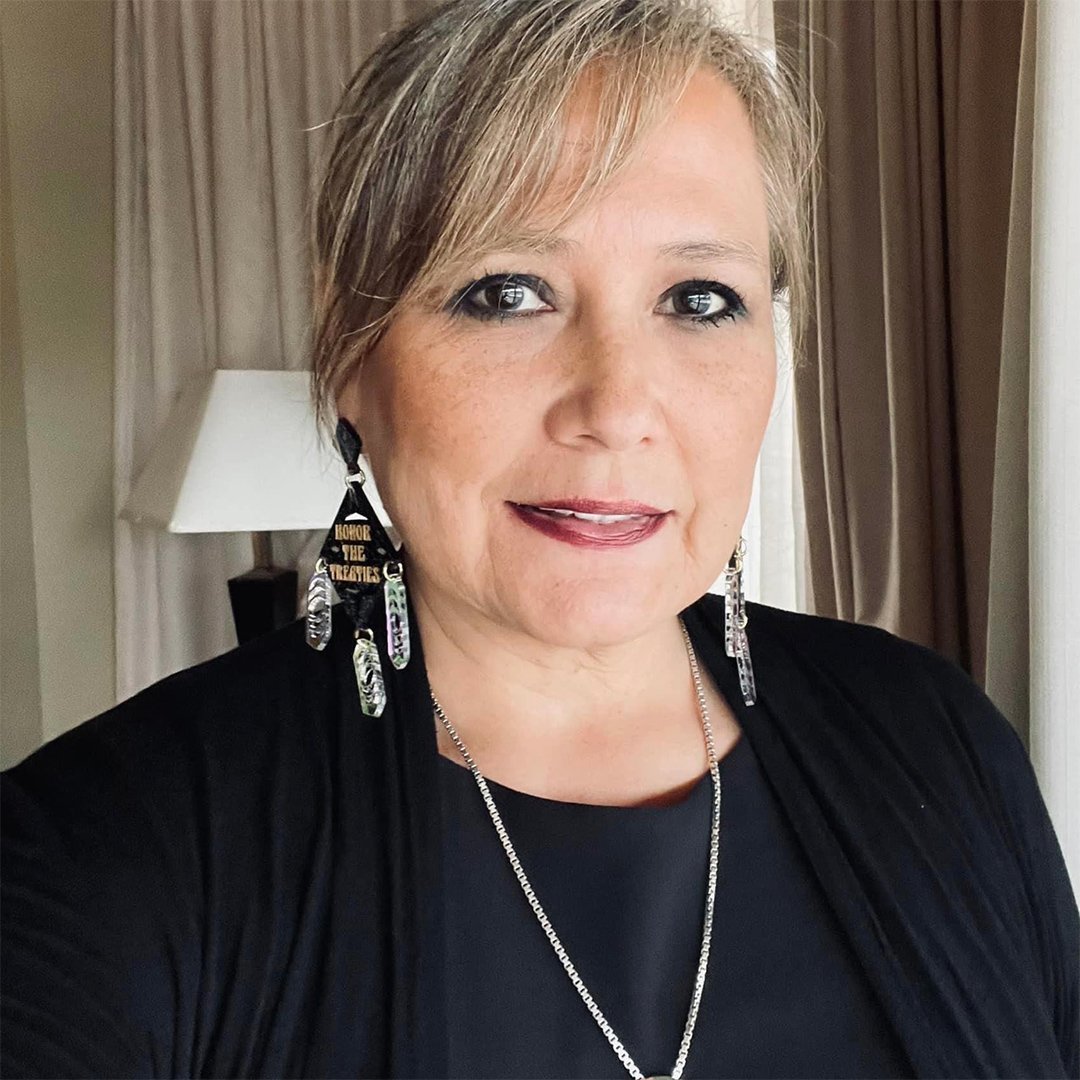
- Details
- By Chez Oxendine
- Food | Agriculture
The Nooksack River in northwestern Washington state used to be so full of salmon that the Lummi Nation, which stewards much of the river, commonly joked they could walk across the water on the backs of the fish.
Today, the fish have nearly vanished. The population is so low the tribe has turned to hatcheries to recover it.
Lummi Nation Councilmember and tribal secretary Lisa Wilson says the transition to hatcheries has been painful for the tribe, who consider the salmon as important as water or air. But it’s been a necessary one: in 2015, the tribe found just nine Chinook salmon in their river. Through the use of their hatcheries, they grew that population to 3,000 by 2021.
“We definitely would prefer the natural origin runs that we had historically,” Wilson, who also serves as vice-chair of the Northwest Indian Fisheries Commission, told Tribal Business News. “We’ve always been taught that when the tide is out, the table is set, so to speak — we always had access to sustenance.”
Despite such success stories — including the Nez Perce Tribe's revitalization of Snake River fall-run Chinook salmon — many tribal hatcheries are struggling to meet the former numbers that naturally occurred in West Coast rivers. Aging facilities lack the necessary equipment to meet new needs brought on by climate change and habitat destruction. To help tribal hatcheries keep salmon populations stable and thriving, the National Oceanic and Atmospheric Administration (NOAA) is stepping in.
 Lisa Wilson, Lummi Nation
Lisa Wilson, Lummi Nation
In partnership with the Interior Department, NOAA launched a $240 million funding opportunity for 27 tribes from northern California to southeast Alaska. Earlier this month, the program distributed roughly $54 million so far through $2 million payments to each of the tribes in the region. The remaining $186 million will be distributed through a competitive grant program in 2025.
The announcement was marked by celebration at the Tulalip Reservation north of Seattle, where tribal youth singers and dancers kicked off the ceremony. Representatives from across the Pacific Northwest attended, including members of the Metlakatla Indian Community of Southeast Alaska and tribes from the Columbia Basin Plateau, Puget Sound, and Washington coast.
In a statement, the agency’s West Coast regional administrator, Jennifer Quan, said she was “proud” to help tribes improve their ability for targeted, efficient releases of fish into their respective rivers.
“I know how hard the tribes have worked to keep these tribal hatcheries going, because they are so important to their culture and way of life,” Quan said. “[This funding] tells me that the nation recognizes these hatcheries’ crucial role in delivering on the treaty promises that the government made to many tribes so long ago.”
The Lummi Nation is hoping to receive between $15 million and $25 million total for their program, Wilson said. In particular, the tribe hopes to improve the intake and raceways at their two facilities, both of which are verging on 60 years old.
It’s a similar story for the Tulalip tribe, whose leadership detailed their plans at an announcement conference for the funding opportunity in early October. Tulalip Executive Director of Natural and Cultural Resources Jason Gobin said 95 percent of the tribe’s Chinook and coho salmon come from hatcheries now. The tribe has already set aside funds for renovations at their Bernie Kai-Kai Gobin Salmon Hatchery, but the federal resources will accelerate these improvements.
"This is a much needed injection into the infrastructure that supports all these hatcheries,” Gobin said at the event.
While tribes welcomed the funding, reaching this point required extensive negotiations.
Lummi Nation’s Wilson called the money a step in the right direction — but only after NOAA's parent agency, the Department of Commerce, was encouraged to come back to the table to consider how best to distribute funding to tribes. Initially, the funding was part of a larger pool that would have involved an entirely competitive grant, which made it more onerous for tribes to acquire and then manage, Wilson said.
"We want to thank NOAA for listening," Tulalip Vice Chair Misty Napeahi said in closing remarks at the launch event. "We go back a lot as tribal governments to Washington, D.C. and the state level and sometimes we're met with closed ears. We can't get the work done unless people are willing to listen to what we have to say."
Wilson recalls telling Secretary of Commerce Gina Raimondo that if funding didn’t make it to tribal hatcheries soon, their salmon could go extinct by 2050. The conversation had the intended effect, bringing tribes to the table on how to roll out the money and resulting in the tribal-focused program now in progress.
Beyond fulfilling treaty obligations, tribal hatcheries play a crucial role in supporting tribal employment and nutrition while preserving cultural traditions. The millions of salmon produced annually also benefit non-tribal commercial and recreational fisheries, helping sustain tourism and working waterfronts throughout the region.
“We do feel like this was a big win,” Wilson said. “Our rivers are changing, and so we need to adapt - and so this is a monumental thing to get this funding, and it’s monumental what we’re going to be doing with the funding.”
